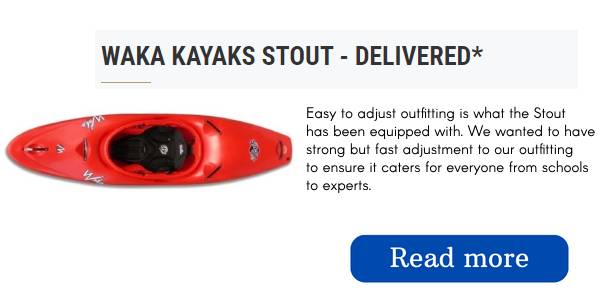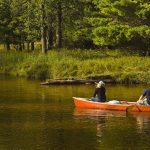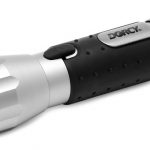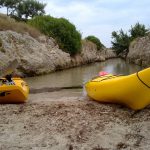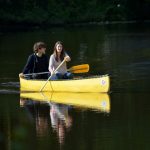Prior to just randomly getting into a canoe, make sure you have worked out certain elements such as the bow (front) and stern (back) of the vessel.
You should also figure out who’s sitting where. The simplest way to determine the front of the boat is to examine the seating.
If you attempt to sit in the rear seat as if it were a front seat, you will quickly see that there is not much room for your legs since the bow has the most space between the boat and the seat.
Where To Sit In A Canoe
The back end of the boat does most of the steering, so it’s best to put the person with more experience at that spot when you and your partner are paddling together. Ideally, the person who is heavier ought to take the back seat in a canoe or kayak, but their skill set as a paddler may supersede this standard.
If you are canoeing alone, it’s a good idea to propel yourself forward in the vessel. You should have your weight evenly distributed so that the forward part of the boat is not affected by the wind.
If your canoe is symmetrical–with the same shape of the bow and stern–you can turn around and sit on the bow seat and paddle the canoe in reverse. This will help balance your weight so more of it is towards the front of the boat.
At other moments, you must position yourself nearer the handlebars (which are placed in the middle of the canoe). It will depend on conditions and the boat itself.
How To Get Into A Canoe
Canoes are relatively steady once you’re in them, but lots of people find it tough to enter them; this is because when you get in, your balance is off-kilter. Getting the load as close to the bottom of the canoe as possible will make the vessel more secure.
It is advisable to position the canoe at a right angle to the beach when you start your voyage from the beach. One person can stabilize the canoe from the rear as it is on the ground, while a different individual pedals from the bow end and guides the vessel to the bow seat.
Make sure you crouch and lean against the sides of the boat as much as possible, keeping your feet situated close to the midline of the vessel. Once you’re in position, you can sit down.
Once the person in the front of the canoe is in their seat, the individual at the back can begin to guide the boat forward until it is in the water. After that, they should step on board with care, taking their place on the stern seat.
Entering a canoe from a dock or rocky shore is slightly more challenging, yet still quite achievable if you take caution and be orderly in your actions.
Position the canoe parallel to the dock or shore. One individual keeps the boat steady while the other individual gets into the canoe. While stepping in, remember to stay low.
When entering the canoe, put one foot in at a time, making sure to stand in the middle when doing so.
If you’re paddling alone, the launch process is similar, but you don’t have someone else to keep the kayak still for you. Make certain you stretch over to the outer side of the boat to balance your weight out before entering and slowly place one foot into the midpoint of the vessel.
Getting into the boat at the back end, which is skinnier, and progressing towards the front is beneficial.
How Do I Get Out Of A Canoe?
Stepping off a boat on a shallow beach is the same procedure as getting on, just in the opposite order. Paddle the boat into shore, perpendicular to the shoreline.
The bow occupant leaves the boat and steadies it for the person sitting behind them who, in turn, steps up to the nose of the boat, and then steps off into the shallower part of the water.
Getting off a boat on a dock or a rocky shoreline is the same as getting on, only in reverse. One person should secure the vessel to the dock, while the other should get up slowly using their hands to hold onto the edges of the boat and positioning their feet in the middle.
That individual will move cautiously and deliberately from the vessel onto the wharf. Then they’ll stabilize the boat while their partner exits.
As an individual in a canoe, you should stabilize the vessel by gripping the exterior ledge and the dock, come up from a crouched posture in the middle of the canoe, and then cautiously ascend onto the dock.
Kneeling vs. sitting
You can only do two positions while in a canoe: kneeling or sitting. While remaining seated may be more cozy than standing, it isn’t necessarily the optimal decision. Here’s why.
When you’re in a canoe, your body’s center of mass shifts onto the seats, raising your center of gravity more than if you were to kneel. When you are on your knees, the majority of your weight is below the level of the water’s surface in the boat.
The farther up your center of gravity is located, the more probable it is for you to become off balance.
It can be stated that only a small proportion of canoeists, likely those with more supple joints, can stay in a kneeling position for the duration of a day. It’s beneficial to alternate between standing and kneeling while out for a long paddle.
Just keep in mind that maintaining your balance is much easier if you’re seated, so when you come across choppy waters or a tricky paddling situation, it’s ideal to get down on your knees to be able to take action.
It is fairly simple to make and install kneepads for your kayak or boat workstations.
How to not tip a canoe
If you’re apprehensive about the possibility of flipping your canoe, you’ll have to dedicate some time to paddling it to get past the trepidation. Canoes are surprisingly stable once you’re in them.
The amount of time you devote to boating will soon demonstrate to you that it is not a precarious situation. Anyone can balance a canoe.
Stick to these easy directions and you won’t have any issue staying balanced in your canoe. To begin, the most secure position is to kneel down inside the canoe. Once you build up your self-assurance, you can sit on the chairs and stay steady.
But it’s best to kneel if you feel nervous. Remember the adage, “A loose hip keeps the vessel safe” (or something along those lines) which is saying that when the boat starts to tilt, your torso and upper body should stay steady and level to the surface of the water.
Keeping your hip joints flexible and calm will guarantee that your canoe won’t turn over.
Canoe Safety
Wearing a Life Jacket or PFD (Personal Floatation Device)
Yes, we wear life jackets in canoes! It is strongly recommended that all people, regardless of age, wear a Personal Flotation Device while canoeing or kayaking.
Have a look at our Gear Guide regarding Personal Flotation Devices and check out the U.S.
Coast Guard’s website to know more about the key points of selecting the right PFD for both children and adults.
Righting a Tipped Canoe
The possibility of overturning your canoe can be greatly reduced if it is properly loaded, paddling skills are properly used to provide more control and stability, and you are aware of when you should not go out on the water.
You should make safety your top priority when canoeing; don’t wait until you are in an emergency and all of your belongings are in the water to figure out how to resolve it.
Inclement Weather: Lightning and Thunderstorms
The climate in the area of canoe country, especially in the northern locations, varies rapidly and often. It’s not unusual to go to bed with a clear sky only to find that there’s a fierce storm in the same area by the time you wake up.
Being able to manage in difficult conditions will ensure you are safe and be able to resume your journey once the bad weather is over.
Inclement Weather: Wind Storms
The devastating July 4th storm that caused severe damage to the Boundary Waters Canoe Area Wilderness in 1999 was not caused by lightning or fires, but rather by devastating straight-line winds.
Storms in areas known for canoeing tend to come with powerful winds, which necessitates different safety measures than those needed to protect from lightning. To get more information on powerful windstorms and the risks they pose, reading “Our Wounded Wilderness: The Great Boundary Waters Canoe Area Storm” by Jim Cordes is advisable.
We advise using Basic Essential Weather Forecasting by Michael Hodgson for weather predictions.
Paddling Basics
Paddle Selection
The selection of a correctly sized and suited paddle is essential to provide a smooth, and dynamic stroke, instead of getting tired quickly and accomplishing little.
Browse through the Paddles part in our Gear Guide for all of the data you need to know about diverse paddle kinds and when to use them.
Paddling: Basic Strokes
We have all been witness to, or taken part in, the act of a canoe travelling down a lake in a haphazard, winding fashion, sometimes ending up completing a loop.
What about the canoe that is facing the waves on a gusty day and can’t turn back? Gaining proficiency in the way you paddle will assist you in getting to your destination in the shortest and most energy-friendly way.
Let’s face it: in paddling, you are the motor. Why not make it a little easier for yourself?
Campsites: Selection and Set-up
It can be tricky to ignore a single island camping spot featuring a lovely stretch of sand and an ideal sight of the sun going down.
Paying attention to features such as bear droppings on the toilet trail, a campsite that is too revealing, or trees that are drooping can be essential for getting a peaceful sleep as well as protecting your safety.
Familiarize yourself with the process of choosing and preparing a campsite before departing on your journey using the resources provided below. It is advisable to research the rules and regulations pertaining to your destination before you travel.
Consult the Destination Guide’s Park & Permit section for rules and regulations concerning selecting and setting up campsites in particular canoe parks and wilderness areas.
Outfitters can give an idea of the best place to camp; if you’re visiting the Boundary Waters Canoe Area Wilderness or Quetico Park, be sure to look at Canadian Border Outfitters’ website.
The knowledge and advice they offer can be beneficial when planning a camping trip to any northern region that requires canoeing.
Packs: Selection and Packing Guides
When it comes to selecting the ideal pack for a canoeing excursion, internal frame backpacks crafted for hiking will be comfortable but not suitable for this type of activity.
A better option is to opt for a more solid, shorter backpack that is specifically made for canoeing. The packs in the canoe sit low, making the canoe steady when out in the water.
For more information on the best pack for you, take a look at the Gear Guide’s Portage Packs section, in addition to the recommended links.
Portaging
Most dictionaries define portaging as the act of carrying boats and supplies from one waterway to another that can be navigated. It sounds rather benign. In canoe country, transporting the boat by land from one body of water to the next is usually done along a narrow and bumpy path.
Although it can seem straightforward, carrying a canoe yourself across such terrain can be a taxing endeavor. Carrying a canoe and its load overland is a major feat on a canoe trip, and paddlers have plenty of opinions regarding the experience.
Read further for various types of guidance as you get ready to embrace it.
Two books that offer guidance on making it through a portage, with advice on techniques, packing the gear, carrying the canoe, and protecting yourself, are Lee Hegstand’s Canoe Country Wilderness Canoeing and Brian Cooke’s One Step at a Time.
Bear Safety and Hanging a Bear Pack
Outfitters and guides that specialize in canoeing often suggest suspending your food bag to keep it out of reach of bears and chipmunks (yes, they really can be a menace when it comes to protecting your food) while some simply leave the choice up to you.
Canoe campers can be divided into two groups – those who always put their food packs in a suspended position and those who never do. Where do you fit?
No matter where you are, it’s beneficial to have the knowledge of how to respond promptly if you find yourself in the middle of an unexpected late-night event. And, in 1994 the U.S.
The Forest Service put out a comprehensive report concerning low-impact food lifts. Its information is still applicable today.
Hanging a Tarp
Having lunch in the rain, setting up camp in a scorching spot without much shade, and a wind blowing in the right direction means it’s time to break out an essential piece of kit – a tarp.
A badly mounted tarp will not help much in any circumstance; the approach to hanging it can be as unique as the personalities present during the excursion.
You can find tarps in the part of the Gear Guide dedicated to tents and tarps.
